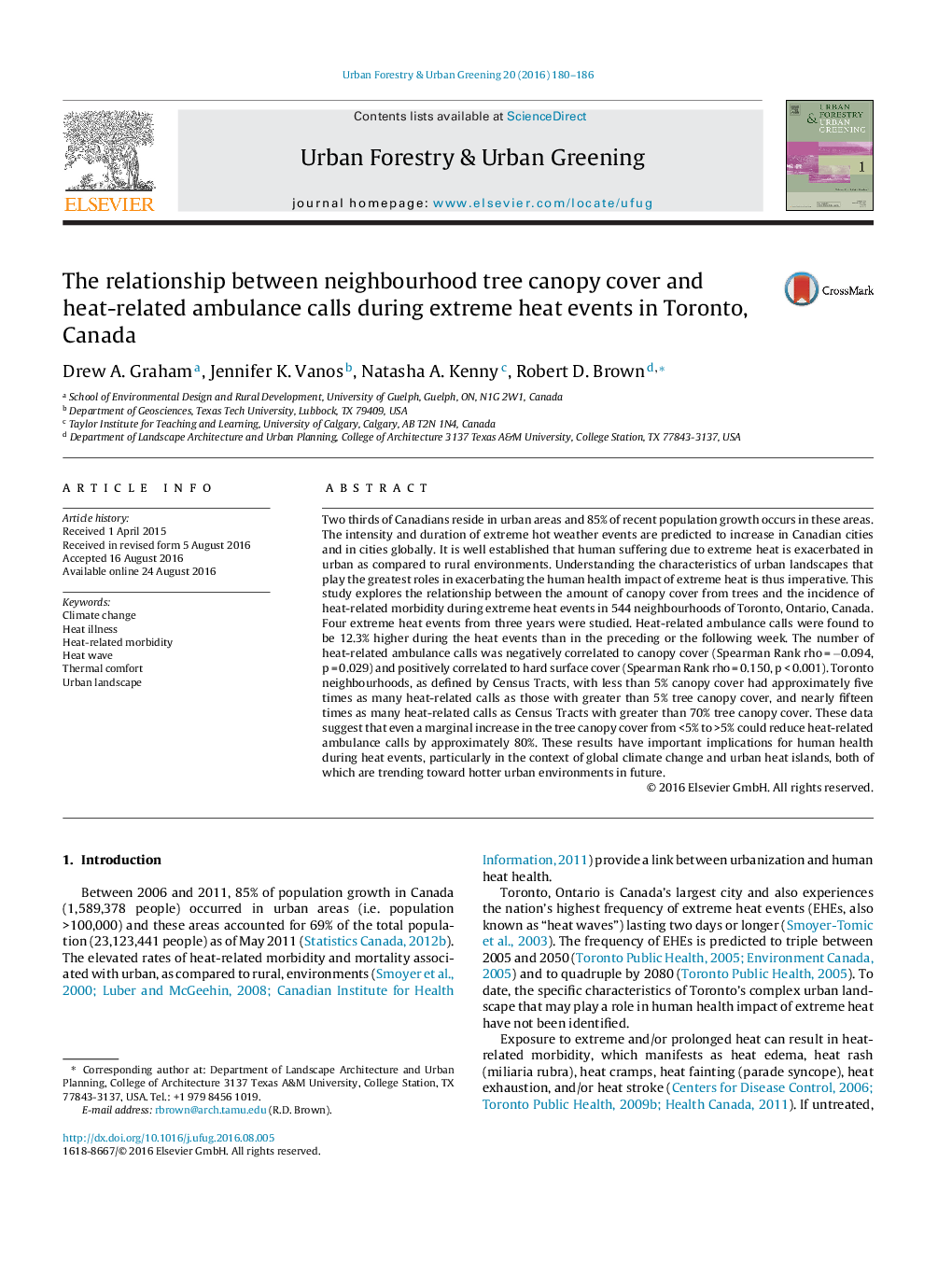| کد مقاله | کد نشریه | سال انتشار | مقاله انگلیسی | نسخه تمام متن |
|---|---|---|---|---|
| 6461904 | 1421870 | 2016 | 7 صفحه PDF | دانلود رایگان |
- Heat-related morbidity is elevated during extreme heat events in Toronto, Canada.
- Heat-related morbidity is related to both tree canopy cover and hard surface cover.
- Heat-related morbidity is reduced by 80% as tree canopy cover increases beyond 5%.
- Heat-related morbidity is reduced by 75% as hard surface cover decreases below 75%.
- The urban tree canopy is central to human heat health and resiliency planning.
Two thirds of Canadians reside in urban areas and 85% of recent population growth occurs in these areas. The intensity and duration of extreme hot weather events are predicted to increase in Canadian cities and in cities globally. It is well established that human suffering due to extreme heat is exacerbated in urban as compared to rural environments. Understanding the characteristics of urban landscapes that play the greatest roles in exacerbating the human health impact of extreme heat is thus imperative. This study explores the relationship between the amount of canopy cover from trees and the incidence of heat-related morbidity during extreme heat events in 544 neighbourhoods of Toronto, Ontario, Canada. Four extreme heat events from three years were studied. Heat-related ambulance calls were found to be 12.3% higher during the heat events than in the preceding or the following week. The number of heat-related ambulance calls was negatively correlated to canopy cover (Spearman Rank rho = â0.094, p = 0.029) and positively correlated to hard surface cover (Spearman Rank rho = 0.150, p < 0.001). Toronto neighbourhoods, as defined by Census Tracts, with less than 5% canopy cover had approximately five times as many heat-related calls as those with greater than 5% tree canopy cover, and nearly fifteen times as many heat-related calls as Census Tracts with greater than 70% tree canopy cover. These data suggest that even a marginal increase in the tree canopy cover from <5% to >5% could reduce heat-related ambulance calls by approximately 80%. These results have important implications for human health during heat events, particularly in the context of global climate change and urban heat islands, both of which are trending toward hotter urban environments in future.
Journal: Urban Forestry & Urban Greening - Volume 20, 1 December 2016, Pages 180-186
